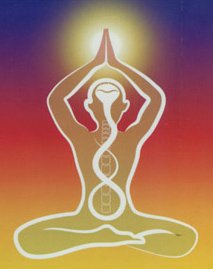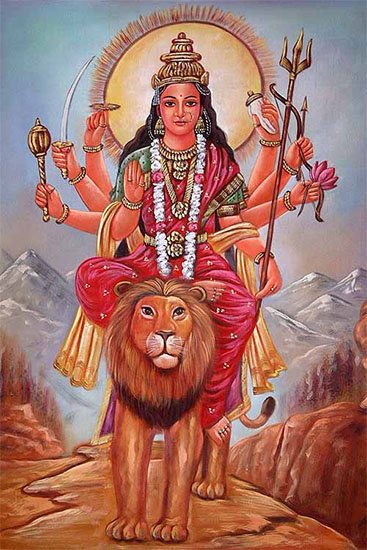Parishrama, Pariśrama, Pariśrāma: 15 definitions
Introduction:
Parishrama means something in Hinduism, Sanskrit, Marathi, Hindi. If you want to know the exact meaning, history, etymology or English translation of this term then check out the descriptions on this page. Add your comment or reference to a book if you want to contribute to this summary article.
The Sanskrit terms Pariśrama and Pariśrāma can be transliterated into English as Parisrama or Parishrama, using the IAST transliteration scheme (?).
In Hinduism
Yoga (school of philosophy)
Source: ORA: Amanaska (king of all yogas): A Critical Edition and Annotated Translation by Jason BirchPariśrama (परिश्रम) refers to the “effort (of concentration and meditation)”, according to the Yogatārāvalī: a short Yoga text of twenty-nine verses presenting Haṭhayoga as the means to Rājayoga (i.e., Samādhi).—Accordingly, while discussing the connection between Haṭhayoga and Rājayoga: “For great adepts [of yoga], an extraordinary absorption of the breath arises, [which is] free from the activity of all the senses. [It is brought about] by the cessation of the [normally] unrestrained process of breathing. [Such cessations] are called Kevalakumbhaka. There are no gazing points, no fixing of the mind [on a meditation-object], no time or place, no [deliberate] stopping of the breath, nor the effort (pariśrama) of concentration and meditation when Rājayoga is flourishing”.

Yoga is originally considered a branch of Hindu philosophy (astika), but both ancient and modern Yoga combine the physical, mental and spiritual. Yoga teaches various physical techniques also known as āsanas (postures), used for various purposes (eg., meditation, contemplation, relaxation).
Shaktism (Shakta philosophy)
Source: Google Books: ManthanabhairavatantramPariśrama (परिश्रम) refers to “effort”, according to the Śrīmatottara-tantra, an expansion of the Kubjikāmatatantra: the earliest popular and most authoritative Tantra of the Kubjikā cult.—Accordingly, [while describing the visualized form of Navātman Bhairava]: “[...] He who practices the Navātmānanda Bhairava, in this way quickly attains success. O fair lady, it is the means to attain all the things (one) desires. He who has Navātman in (his) heart holds success in (his) hand. O fair lady, the Krama of one who does not deposit the Vaḍava Fire of Navātman is empty; (his) effort (jñāna-pariśrama), O goddess, is useless. He is not liberated (and is like) those who are sunk in sinful action. O mistress of the God of the gods, he sinks into the ocean of transmigration which is hard to cross. [...]”.

Shakta (शाक्त, śākta) or Shaktism (śāktism) represents a tradition of Hinduism where the Goddess (Devi) is revered and worshipped. Shakta literature includes a range of scriptures, including various Agamas and Tantras, although its roots may be traced back to the Vedas.
Languages of India and abroad
Marathi-English dictionary
Source: DDSA: The Molesworth Marathi and English Dictionarypariśrama (परिश्रम).—m (S) Laborious and fatiguing exertion. 2 Fatigue, weariness, exhaustion from labor.
Source: DDSA: The Aryabhusan school dictionary, Marathi-Englishpariśrama (परिश्रम).—m Laborious exertion. Fatigue.
Marathi is an Indo-European language having over 70 million native speakers people in (predominantly) Maharashtra India. Marathi, like many other Indo-Aryan languages, evolved from early forms of Prakrit, which itself is a subset of Sanskrit, one of the most ancient languages of the world.
Sanskrit dictionary
Source: DDSA: The practical Sanskrit-English dictionaryPariśrama (परिश्रम) or Pariśrāma (परिश्राम).—
1) Fatigue, exhaustion, trouble, pain; आत्मा परिश्रमस्य पदमुपनीतः (ātmā pariśramasya padamupanītaḥ) Ś.1; R.1.58;11.12.
2) Exertion, labour; ब्रह्मञ्छ्रेयः परिश्रामः पुंसो मद्दर्शनावधिः (brahmañchreyaḥ pariśrāmaḥ puṃso maddarśanāvadhiḥ) Bhāgavata 2.9.2.
3) (Hence) Close application to or study of, being constantly occupied with; आर्ये कृतपरि- श्रमोऽस्मि चतुःषष्ठ्यङ्गे ज्योतिःशास्त्रे (ārye kṛtapari- śramo'smi catuḥṣaṣṭhyaṅge jyotiḥśāstre) Mu.1.
4) The result; अस्यैष नीतेः परिश्रमः (asyaiṣa nīteḥ pariśramaḥ) Pratijñā.2.
Derivable forms: , pariśrāmaḥ (परिश्रामः).
Source: Cologne Digital Sanskrit Dictionaries: Shabda-Sagara Sanskrit-English DictionaryPariśrama (परिश्रम).—m.
(-maḥ) 1. Labour, trouble, pain. 2. Distress, fatigue. E. pari exceeding, śrama weariness.
Source: Cologne Digital Sanskrit Dictionaries: Benfey Sanskrit-English DictionaryPariśrama (परिश्रम).—pariśrāma, i. e. pari-śram + a, m. 1. Fatigue, [Sāvitryupākhyāna] 4, 21. 2. Exertion, [Raghuvaṃśa, (ed. Stenzler.)] 19, 15.
Pariśrama can also be spelled as Pariśrāma (परिश्राम).
Source: Cologne Digital Sanskrit Dictionaries: Cappeller Sanskrit-English DictionaryPariśrama (परिश्रम).—[masculine] fatigue, pain, exertion, labour.
Source: Cologne Digital Sanskrit Dictionaries: Monier-Williams Sanskrit-English Dictionary1) Pariśrama (परिश्रम):—[=pari-śrama] [from pari-śram] m. fatigue, exertion, labour, fatiguing occupation, trouble, pain, [Mahābhārata; Kāvya literature] etc.
2) Pariśrāma (परिश्राम):—[=pari-śrāma] [from pari-śram] m. fatiguing, occupation, trouble, [Bhāgavata-purāṇa]
Source: Cologne Digital Sanskrit Dictionaries: Yates Sanskrit-English DictionaryPariśrama (परिश्रम):—[pari-śrama] (maḥ) 1. m. Distress, fatigue.
Source: DDSA: Paia-sadda-mahannavo; a comprehensive Prakrit Hindi dictionary (S)Pariśrama (परिश्रम) in the Sanskrit language is related to the Prakrit word: Parissama.
[Sanskrit to German]
Sanskrit, also spelled संस्कृतम् (saṃskṛtam), is an ancient language of India commonly seen as the grandmother of the Indo-European language family (even English!). Closely allied with Prakrit and Pali, Sanskrit is more exhaustive in both grammar and terms and has the most extensive collection of literature in the world, greatly surpassing its sister-languages Greek and Latin.
Hindi dictionary
Source: DDSA: A practical Hindi-English dictionaryPariśrama (परिश्रम) [Also spelled parisram]:—(nm) labour, industry, hard work, exertion, diligence; ~[śramaśīla] tending to labour/work hard, industrious, disposed to exert; hence ~[śramaśīlatā] (nf); ~[śramī] laborious, industrious, painstaking; hardworking, diligent; —[kabhī vyartha nahīṃ jātā] industry must bring its reward, hard work is never wasted.
...
Kannada-English dictionary
Source: Alar: Kannada-English corpusPariśrama (ಪರಿಶ್ರಮ):—
1) [noun] physical or mental exhaustion; weariness; fatigue.
2) [noun] knowledge, skill or practice resulting from the activities as training, observation, personal participation, etc.; experience.
3) [noun] hard work; active use of strength, power, etc.; continuous and sincere effort.
Kannada is a Dravidian language (as opposed to the Indo-European language family) mainly spoken in the southwestern region of India.
See also (Relevant definitions)
Partial matches: Shrama, Pari.
Starts with: Parishramana, Parishramapaha.
Ends with: Bhrashtaparishrama, Dharanaparishrama, Dhyanaparishrama, Jnanaparishrama, Kritaparishrama, Pathaparishrama, Samsaraparishrama, Saparishrama, Shreyahparishrama.
Full-text (+5): Shreyahparishrama, Parishram, Parishranti, Parishramapaha, Nodin, Parissama, Athaka, Bhrashtaparishrama, Pratishrama, Samsaraparishrama, Shilapushpa, Vanasad, Vanasamvasin, Shilakusuma, Patanjala, Kritaparishrama, Nishthita, Haddi, Avamarda, Shreyas.
Relevant text
Search found 4 books and stories containing Parishrama, Pariśrama, Pariśrāma, Parisrama, Pari-shrama, Pari-śrama, Pari-srama, Pari-śrāma; (plurals include: Parishramas, Pariśramas, Pariśrāmas, Parisramas, shramas, śramas, sramas, śrāmas). You can also click to the full overview containing English textual excerpts. Below are direct links for the most relevant articles:
Bhakti-rasamrta-sindhu (by Śrīla Rūpa Gosvāmī)
Verse 2.1.154 < [Part 1 - Ecstatic Excitants (vibhāva)]
Chaitanya Bhagavata (by Bhumipati Dāsa)
Verse 3.2.114 < [Chapter 2 - Description of the Lord’s Travel Through Bhuvaneśvara and Other Placesto Jagannātha Purī]
Verse 1.17.50 < [Chapter 17 - The Lord’s Travel to Gayā]
Garga Samhita (English) (by Danavir Goswami)
Verse 8.9.7 < [Chapter 9 - Lord Balarāma’s Rāsa Dance]
Prasthanatrayi Swaminarayan Bhashyam (Study) (by Sadhu Gyanananddas)
3.8.2. Purpose of the Creation < [Chapter 3 - Analysis on the Basis of Metaphysics]